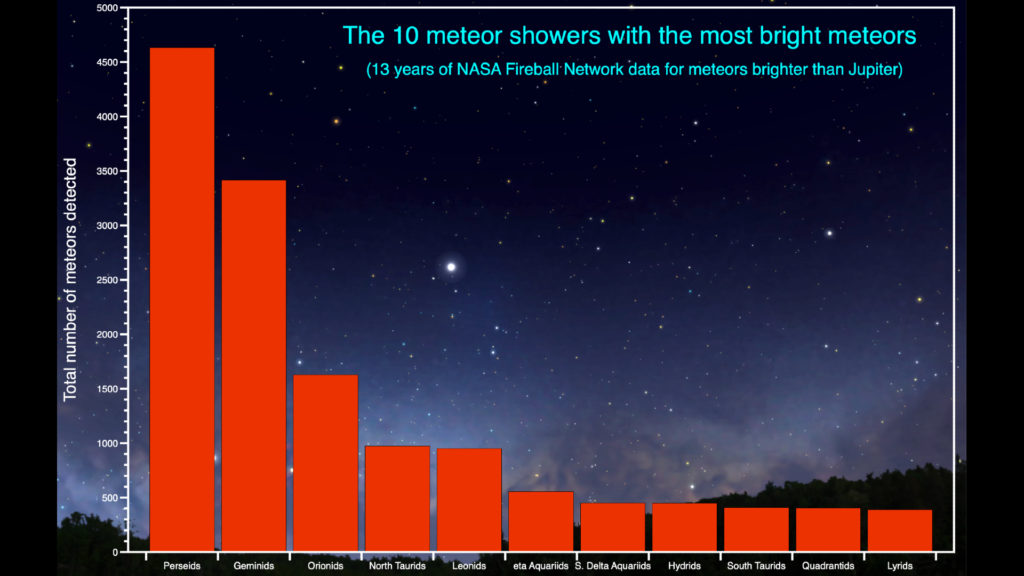Did you miss all of the summer meteor showers? No worries. The best meteor show of the year is coming in November. Learn the times and techniques for viewing nature’s amazing fireworks.
The Orionids meteor shower is active right now and peaks on October 20 and 21. Unfortunately the moon is near full, so you might not see much. Orionids are named after the constellation Orion, because the meteors seem to emerge or radiate from the same area in the sky as the constellation. Learn more about constellations at Name a Star. The meteors are actually dust from Haleys Comet. Be patient more meteor showers are on the way.
Meteors come from leftover comet particles and bits from broken asteroids. When comets revolve around the Sun, the dust they emit gradually spreads into a dusty trail around their orbits. Every year the Earth passes through these debris trails, which allows the bits to collide with our atmosphere where they disintegrate to create fiery and colorful streaks in the sky.
A little preparation will enhance your meteor watching experience. Most meteor showers are best viewed after midnight, so dress warmly and maybe pack some hot drinks. Meteors can appear anywhere in the sky. Lay flat to see as much of the sky as possible. A blanket or a beach chair works great.
Find a secluded viewing spot, away from city lights. Give your eyes 20 minutes to adapt to the dark. Avoid looking at your cellphone, if you get bored. The bright screen can ruin your efforts to adjust your night vision. Bill Cooke, the lead for the Meteoroid Environment Office at NASA’s Marshall Space Flight Center, suggests “leave your phone inside“.
The Leonids peak during mid-November each year and are bright and colorful. They are also fast: Leonids travel at speeds of 44 miles (71 kilometers) per second. Orient yourself with your feet toward the east. The moon will only be about one third full, so this may be your best chance in 2022 to see meteors. But wait there is more.
The Geminids are usually the strongest meteor shower of the year and meteor enthusiasts are certain to circle December 13 and 14 on their calendars. The moon will be three quarters full on December 13th, so consider looking at the Geminids around Thanksgiving or Christmas, when the moon is less bright. Take a friend or loved one out meteor hunting and surprise them with a gift of their very own star from Name a Star.

